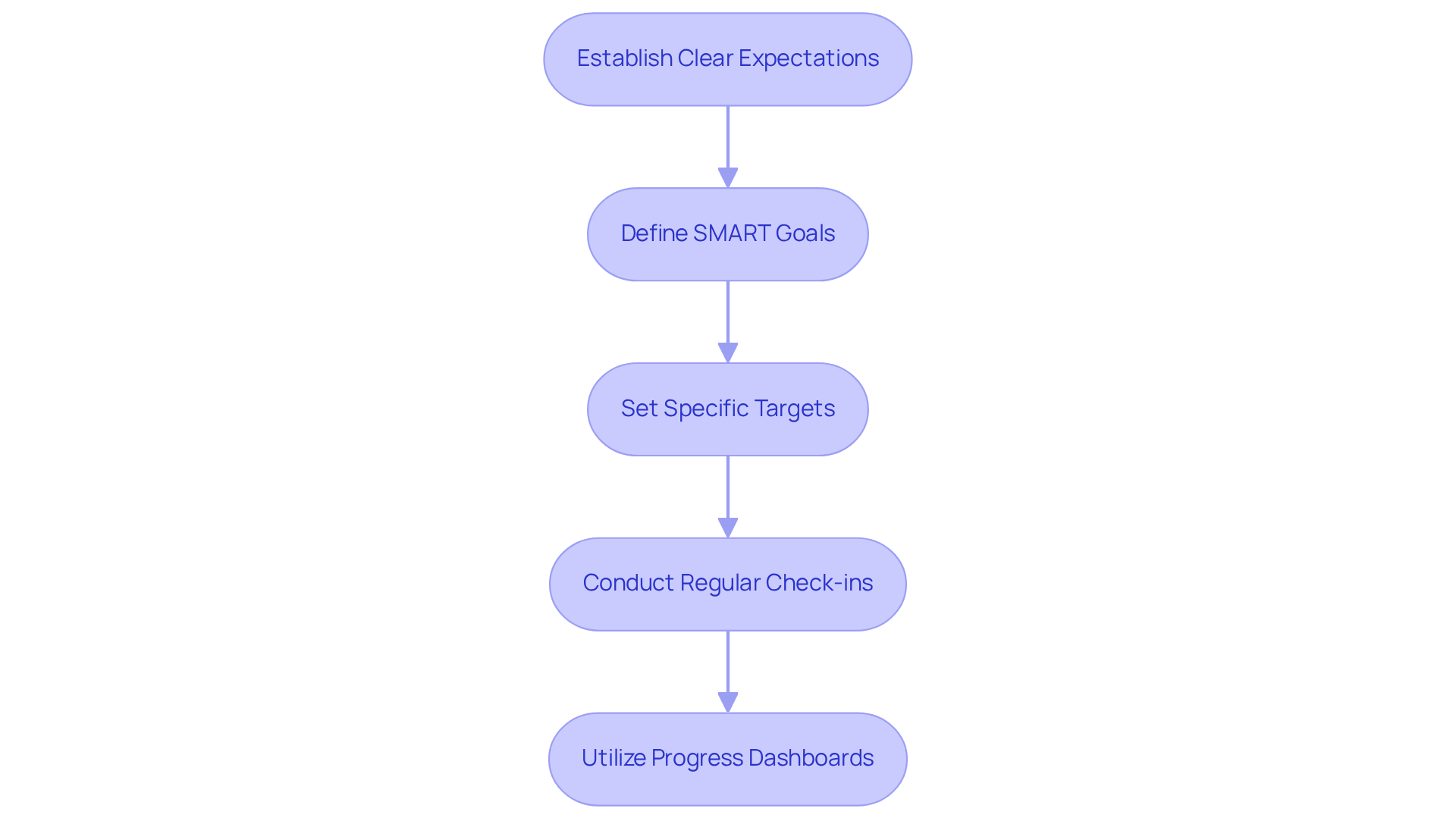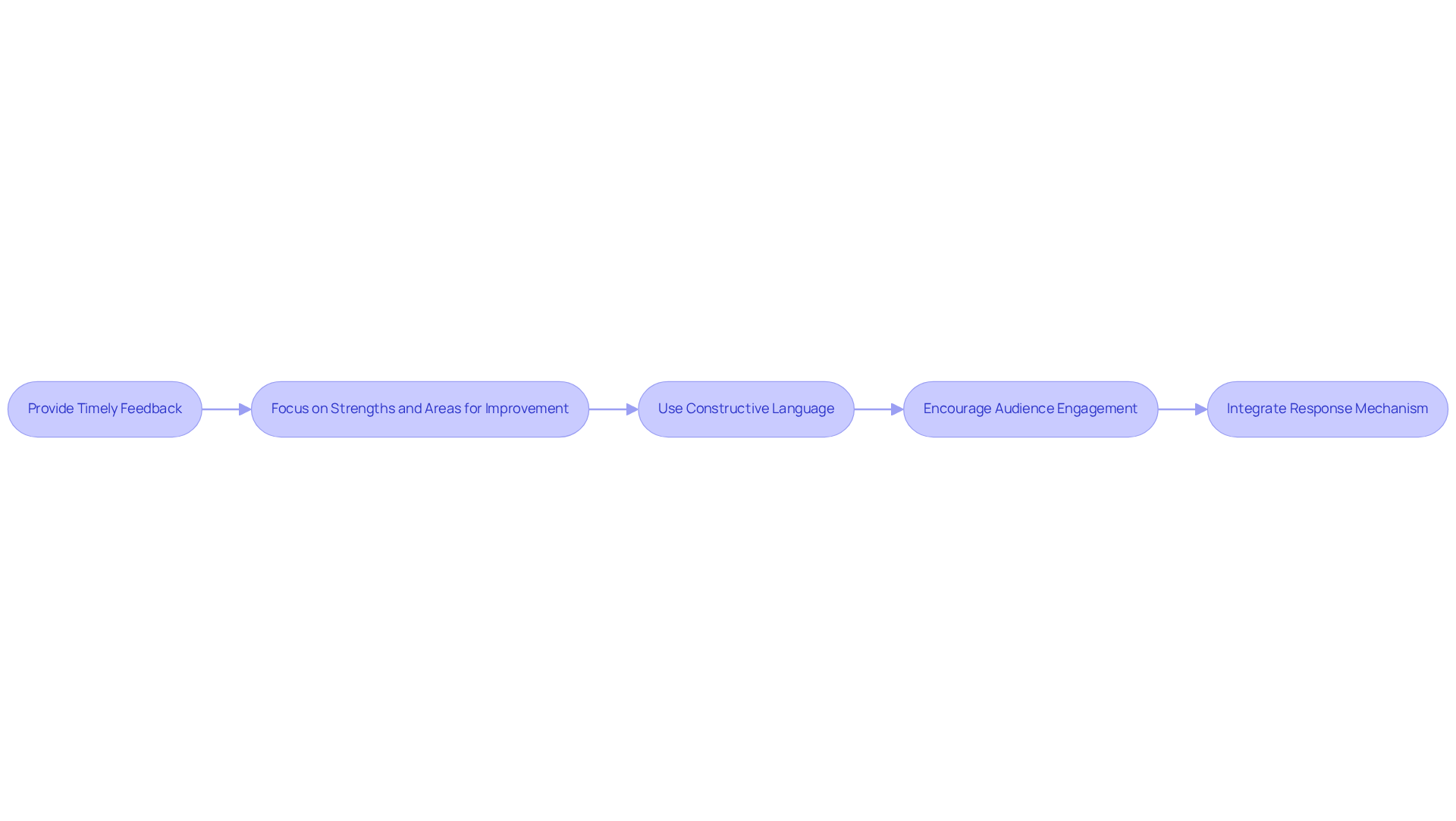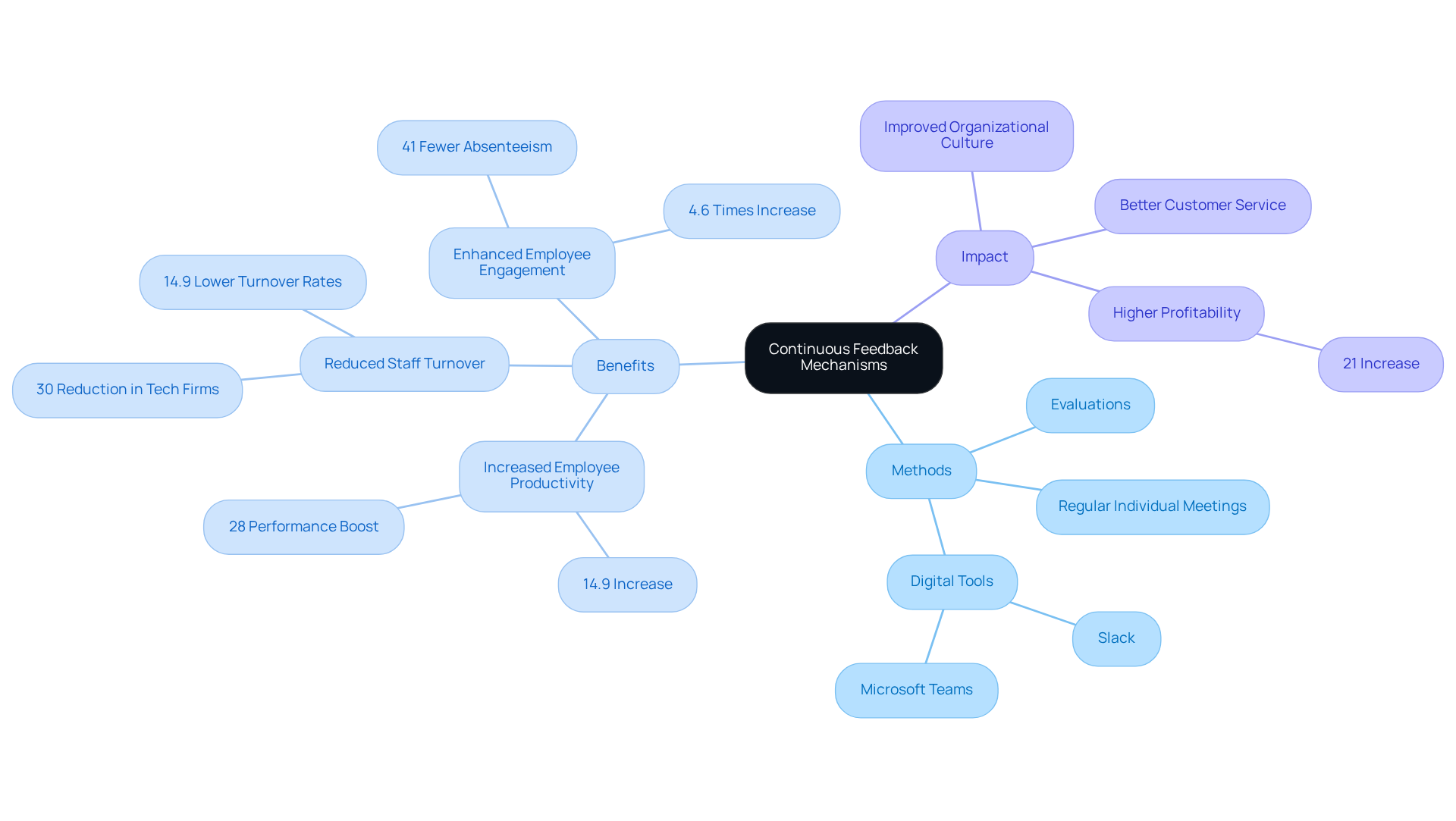
Overview
This article highlights three best practices that significantly enhance direct-to-consumer (DTC) brand performance:
- Establishing clear performance expectations
- Delivering constructive feedback
- Implementing continuous feedback mechanisms
By defining SMART goals, DTC brands can provide timely and actionable feedback, fostering ongoing communication that drives improvement in employee engagement and productivity. Notably, statistics indicate a remarkable 14.9% increase in productivity and reduced turnover rates in organizations that adopt these practices. These findings underscore the importance of integrating these strategies into the operational framework of DTC brands.
Introduction
In the competitive landscape of direct-to-consumer (DTC) brands, enhancing performance is not just beneficial—it is essential for sustained success. By establishing clear performance expectations, delivering constructive feedback, and implementing continuous evaluation mechanisms, brands can unlock significant improvements in team dynamics and overall effectiveness. Yet, a critical question arises: how can DTC companies effectively integrate these strategies to cultivate a culture of accountability and growth? This article explores proven techniques that drive performance while fostering an engaged workforce, ensuring that brands remain agile and responsive in a rapidly evolving market.
Establish Clear Performance Expectations
To establish clear expectations for outcomes, by defining specific, measurable, achievable, relevant, and time-bound (SMART) goals for each team member. This process involves articulating what success looks like and conveying the criteria that will be used to evaluate effectiveness.
For example, if a brand seeks to , the expectations should encompass defined targets, such as a 10% increase in the upcoming quarter.
Regular check-ins and updates are essential to ensure alignment among team members, allowing for strategic adjustments as necessary. Additionally, leveraging tools like progress dashboards provides real-time insights into advancements, fostering a culture of transparency and accountability.
Brands such as exemplify the successful implementation of these practices, resulting in and overall performance.

Deliver Constructive and Actionable Feedback
Providing practical suggestions is essential for . To achieve this, feedback must be timely, focusing on recent actions rather than past behaviors, while highlighting both strengths and areas for improvement. For instance, instead of stating, 'Your presentation was not good,' a more constructive approach would be, 'Your presentation was informative, but it could be improved by engaging the audience more effectively through questions.'
Furthermore, integrating a response mechanism allows staff to express their opinions on the feedback received, thereby improving the overall process. This fosters a culture of openness and . that prioritize positive input often experience greater employee involvement and improved results.

Implement Continuous Feedback Mechanisms
Establishing is essential for fostering effective communication between team members and management in . This objective can be achieved through:
- Regular individual meetings
- Evaluations
- Implementation of digital tools that facilitate immediate responses
Platforms such as Slack and Microsoft Teams enable swift check-ins and discussions regarding ongoing projects, ensuring that team members remain aligned and engaged. Moreover, conducting allows brands to gauge workforce sentiment and identify areas for improvement, ultimately leading to a more adaptable organizational culture. Research indicates that organizations employing regular evaluation systems witness a compared to those relying on annual assessments, underscoring the necessity of cultivating a culture of continuous dialogue.
Brands that embrace ongoing evaluation systems can swiftly , thereby enhancing their performance. For instance, a DTC brand that consistently solicits feedback on its marketing campaigns can promptly modify strategies based on customer responses, resulting in improved engagement and . A mid-sized technology firm observed a 30% reduction in staff turnover after implementing what reviews best illustrate as the of such practices. Furthermore, companies that enjoy a 14.9% lower employee turnover rate and demonstrate elevated levels of engagement, emphasizing the correlation between and organizational success.

Conclusion
Establishing a strong foundation for Direct-to-Consumer (DTC) brand performance is paramount, hinging on the implementation of best practices that prioritize clarity, constructive feedback, and continuous improvement. By setting clear performance expectations through SMART goals, brands ensure that their teams are aligned and focused on achieving measurable outcomes. This clarity enhances accountability and fosters a culture of transparency essential for growth.
The significance of delivering constructive and actionable feedback cannot be overstated. Timely and specific suggestions significantly improve employee effectiveness. Moreover, implementing continuous feedback mechanisms—such as regular check-ins and digital tools for immediate communication—creates an environment where team members feel valued and engaged. This ongoing dialogue boosts productivity and lowers turnover rates, demonstrating the tangible benefits of a robust feedback culture.
In a rapidly evolving marketplace, DTC brands must embrace these practices to remain competitive. Prioritizing clear expectations, constructive feedback, and continuous evaluation enables brands to adapt swiftly to challenges and capitalize on opportunities. Ultimately, the commitment to these best practices transcends mere performance improvement; it cultivates a thriving organizational culture that empowers employees and drives long-term success.
Frequently Asked Questions
What are SMART goals in the context of performance expectations?
SMART goals are specific, measurable, achievable, relevant, and time-bound objectives that help define clear expectations for team members.
How should DTC companies define success for their team members?
DTC companies should articulate what success looks like by defining specific performance targets and the criteria that will be used to evaluate effectiveness.
Can you provide an example of a performance expectation?
An example of a performance expectation is setting a target for a 10% increase in conversion rates in the upcoming quarter.
Why are regular check-ins important for team alignment?
Regular check-ins are essential to ensure alignment among team members and allow for strategic adjustments as necessary.
What tools can be used to track progress on performance expectations?
Tools like progress dashboards can be leveraged to provide real-time insights into advancements, fostering a culture of transparency and accountability.
Are there any companies that successfully implement these practices?
Yes, brands like Parah Group exemplify the successful implementation of clear performance expectations, resulting in improved team outcomes and overall performance.
FAQs











